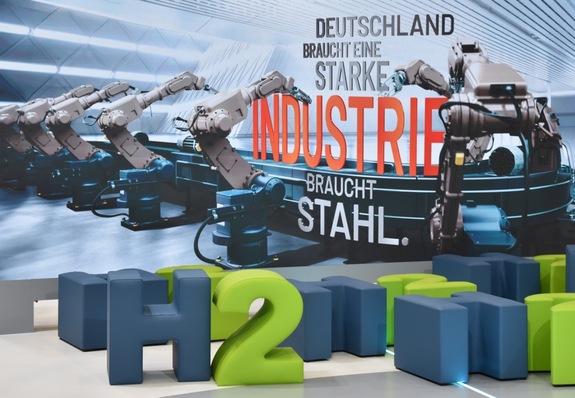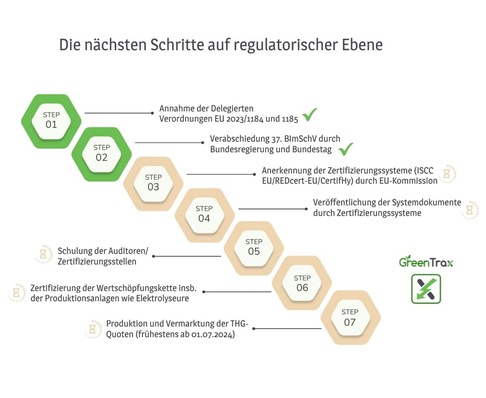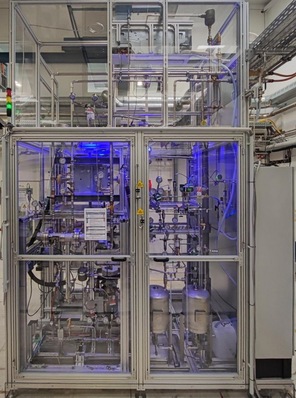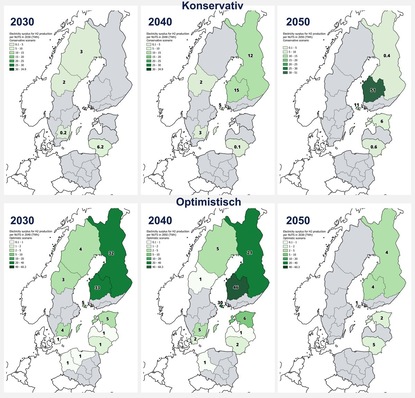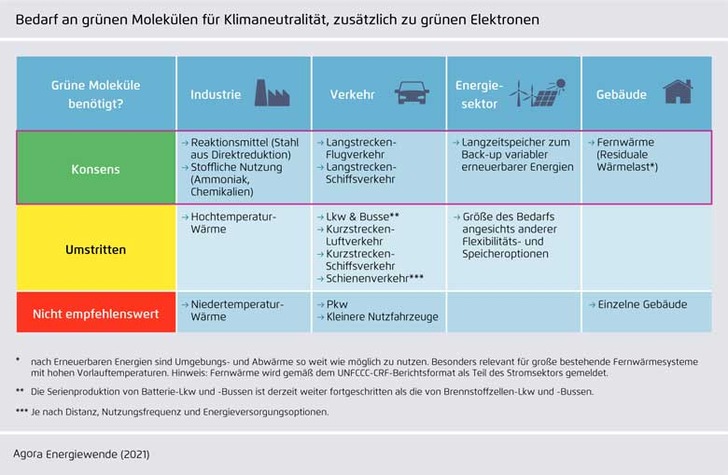
Along the route to climate neutrality in 2045, Germany needs 60 terawatt-hours of CO2-free hydrogen already by 2030, mainly for the development of a climate-neutral industry and security of electrical supply (Prognos et al. 2021). To promote the expansion of hydrogen production through renewables in an economically prudent way, financial resources should flow primarily to areas where future markets for green hydrogen are indisputably being created. So far, renewable green hydrogen is not yet competitive with hydrogen generated from fossil fuels, which is mostly produced by steam reforming of natural gas.
It is often stated that on the demand side, the use of hydrogen is particularly important for those sectors of the economy that are difficult to decarbonize or defossilize. However, a closer look shows that this is less about the respective sectors, but rather about specific applications within all sectors. For easy orientation, a subdivision into consensus applications, controversial applications and non-recommendable hydrogen applications is useful. This subdivision is based on an evaluation of international energy scenarios (Agora Energiewende 2021).
H2 consensus applications in every sector
There is a broad consensus on the necessity of hydrogen for applications where certain chemical properties, the high energy density or the storability of hydrogen are indispensable. These are steel and ammonia production by direct reduction, long-distance air and sea transport, and stored as a long-term backup for renewable-sourced electrical systems. Another application is to satisfy the “residual heat demand” (residuale Wärmelast) in heating networks. That is, the amount of energy still required for heating after renewables, ambient heat and waste heat have been considered as far as possible.
Controversial hydrogen applications include those where, in technological competition with direct electric applications, hydrogen still needs to assert itself, for example high-temperature heating. A non-recommended hydrogen application is that of low-temperature heating in industry and buildings as well as for passenger cars and small commercial vehicles. The reason is that direct electric solutions, such as heat pumps or battery electric vehicles, have considerably lower conversion losses and therefore use renewable electricity much more efficiently. To keep the costs for the H2 market ramp-up as low as possible, public funding should therefore prioritize consensus applications.
The cost gap about three euros per kilogram of H2
The fossil fuel-sourced hydrogen used today costs about 1.4 euros per kilogram to produce. Adding to that the CO2 emissions price of about 50 euros per tonne, this hydrogen, without or with carbon capture, costs roughly 2 EUR/kg. Green hydrogen, in contrast, costs between 3.4 and 6.6 EUR/kg. Thus there is an average cost difference of around 3 EUR/kg. This calculation was based on natural gas prices of 20 euros per megawatt-hour. Even though natural gas currently costs considerably more, futures contracts on the market indicate a price expectation of around 25 to 35 EUR/MWh for the year 2023/24.
Author: Matthias Deutsch - Agora Energiewende, Berlin



